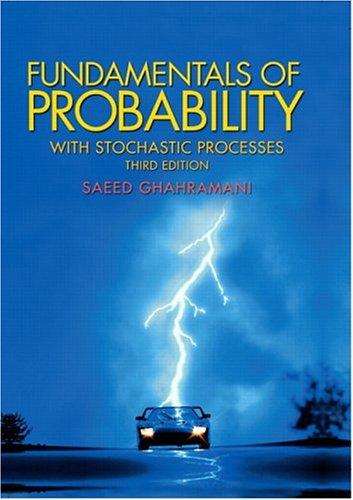26. Let f (x, y) be the joint probability density function of two continuous random variables; f...
Question:
26. Let f (x, y) be the joint probability density function of two continuous random variables; f is called circularly symmetrical if it is a function of G x2 + y2, the distance of (x, y) from the origin; that is, if there exists a function ϕ so that f (x, y) = ϕ( G x2 + y2 ). Prove that if X and Y are independent random variables, their joint probability density function is circularly symmetrical if and only if they are both normal with mean 0 and equal variance. Hint: Suppose that f is circularly symmetrical; then fX(x)fY (y) = ϕ( G x2 + y2). Differentiating this relation with respect to x yields ϕ7 ( G x2 + y2 ) ϕ( G x2 + y2 ) G x2 + y2 = f 7 X(x) xfX(x). This implies that both sides are constants, so that f 7 X(x) xfX(x) = k for some constant k. Solve this and use the fact that fX is a probability density function to show that fX is normal. Repeat the same procedure for fY .
Step by Step Answer:

Fundamentals Of Probability With Stochastic Processes
ISBN: 9780131453401
3rd Edition
Authors: Saeed Ghahramani






